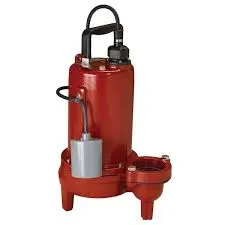Romanian
- Afrikaans
- Albanian
- Amharic
- Arabic
- Armenian
- Azerbaijani
- Basque
- Belarusian
- Bengali
- Bosnian
- Bulgarian
- Catalan
- Cebuano
- Corsican
- Croatian
- Czech
- Danish
- Dutch
- English
- Esperanto
- Estonian
- Finnish
- French
- Frisian
- Galician
- Georgian
- German
- Greek
- Gujarati
- Haitian Creole
- hausa
- hawaiian
- Hebrew
- Hindi
- Miao
- Hungarian
- Icelandic
- igbo
- Indonesian
- irish
- Italian
- Japanese
- Javanese
- Kannada
- kazakh
- Khmer
- Rwandese
- Korean
- Kurdish
- Kyrgyz
- Lao
- Latin
- Latvian
- Lithuanian
- Luxembourgish
- Macedonian
- Malgashi
- Malay
- Malayalam
- Maltese
- Maori
- Marathi
- Mongolian
- Myanmar
- Nepali
- Norwegian
- Norwegian
- Occitan
- Pashto
- Persian
- Polish
- Portuguese
- Punjabi
- Romanian
- Russian
- Samoan
- Scottish Gaelic
- Serbian
- Sesotho
- Shona
- Sindhi
- Sinhala
- Slovak
- Slovenian
- Somali
- Spanish
- Sundanese
- Swahili
- Swedish
- Tagalog
- Tajik
- Tamil
- Tatar
- Telugu
- Thai
- Turkish
- Turkmen
- Ukrainian
- Urdu
- Uighur
- Uzbek
- Vietnamese
- Welsh
- Bantu
- Yiddish
- Yoruba
- Zulu
Telephone: +86 13120555503
Email: frank@cypump.com
nov. . 20, 2024 07:58 Back to list
self priming wastewater pump
Self-Priming Wastewater Pumps Efficiency and Versatility in Fluid Management
In the realm of fluid management, particularly in wastewater treatment, self-priming pumps have emerged as a vital component for various applications. These innovative pumps are designed to handle the challenging conditions often encountered in wastewater environments, offering high efficiency and versatility. This article will explore the operational principles, advantages, and applications of self-priming wastewater pumps.
Understanding Self-Priming Pumps
Self-priming pumps function on a unique operational principle that allows them to draw fluid into the pump without the need for manual priming or the presence of external fluid sources. This feature is particularly beneficial for wastewater systems, where the presence of solids and varying fluid levels can complicate traditional pumping methods.
The design of a self-priming pump includes an integrated chamber that allows air to be expelled as the pump operates, drawing liquid into the impeller. This process allows the pump to maintain prime even when there are fluctuations in the fluid levels. The ability to handle air inclusions without losing suction sets self-priming pumps apart from their standard counterparts, making them a perfect fit for handling wastewater.
Advantages of Self-Priming Wastewater Pumps
1. Ease of Use One of the primary advantages of self-priming pumps is their user-friendly nature. Operators do not need to manually fill the pump with liquid, which simplifies maintenance and reduces downtime, especially in emergency situations.
2. High Efficiency Self-priming wastewater pumps are designed for optimal performance, enabling them to handle various levels of viscosity and solids content commonly found in wastewater. This efficiency ensures that wastewater is moved quickly and effectively through treatment systems.
3. Versatility These pumps can be utilized in numerous applications, including sewage treatment plants, industrial waste disposal sites, and agricultural runoff management. Their adaptability to different environments makes them an invaluable tool for many organizations.
self priming wastewater pump

4. Durability Constructed with robust materials that can withstand corrosive environments and abrasive particles, self-priming pumps tend to have a longer service life than many standard pumps. This durability translates into lower operational costs over time.
5. Energy Efficiency Many modern self-priming pumps are designed with energy efficiency in mind. They often feature advanced engineering that reduces power consumption, helping facilities to lower their energy bills while effectively managing their wastewater systems.
Applications
Self-priming wastewater pumps find applications across diverse sectors. In municipal wastewater treatment facilities, they are used to transfer sewage and effluents from one process area to another. In industrial settings, these pumps handle process wastewater, which often contains harmful chemicals or particulates.
Furthermore, self-priming pumps are commonly employed in construction sites for dewatering processes. They can efficiently manage groundwater levels and prevent flooding, allowing construction activities to proceed without disruption. Additionally, these pumps are beneficial in agricultural settings for managing runoff or transferring wastewater from irrigation systems.
Conclusion
Self-priming wastewater pumps represent an essential technology in the management of fluid dynamics within various industries. Their ability to operate efficiently in challenging conditions, coupled with their ease of use and versatility, makes them a preferred choice for many applications. As industries continue to seek more efficient waste management solutions, the role of self-priming wastewater pumps will undoubtedly become more pronounced, driving advancements in wastewater treatment technologies and contributing to environmental sustainability.
In conclusion, investing in self-priming wastewater pumps not only enhances operational efficiency but also aligns with the growing demand for sustainable practices in fluid management. This ensures a cleaner environment and a more efficient use of resources, making these pumps an indispensable asset in modern wastewater management systems.
-
China Small Slurry Pump Manufacturer - High Efficiency Small Centrifugal Slurry Pumps for Mining & Industry
NewsJun.24,2025
-
Custom Drilling Mud and Slurry Pump Supplier - High Efficiency, Tailored Solutions
NewsJun.10,2025
-
Supply Vertical Submersible Sewage Pump High-Efficiency WQ/QW Pumps Supplier
NewsJun.10,2025
-
Premium Sewage Ejection System & Pumps Efficient Waste Removal
NewsJun.09,2025
-
Premium Wholesale Slurry Pump Impellers Durable & Efficient Slurry Handling
NewsJun.09,2025
-
Top Sewage Pump Companies Durable Industrial Solutions for Efficiency
NewsJun.09,2025










